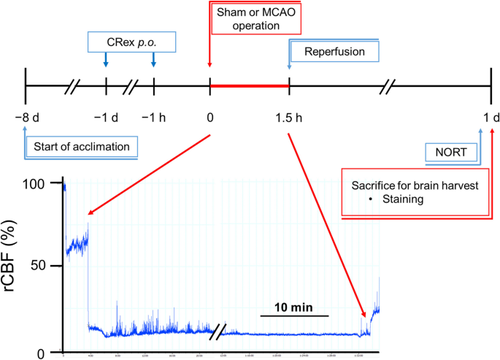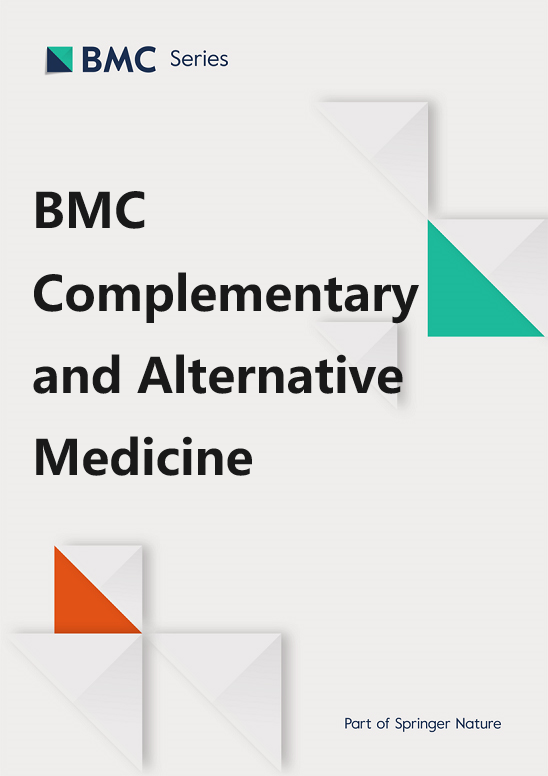川芎甲醇提取物对大脑中动脉闭塞所致缺血性脑卒中小鼠的神经保护作用:抑制星形胶质细胞和小胶质细胞相关炎症反应
IF 3.4
2区 医学
Q1 Medicine
引用次数: 0
摘要
在亚洲传统医学中,川芎(Chuanxiong Rhizoma [CR])的干燥根茎长期以来一直被用于治疗头面部疼痛,如头痛。(Chuanxiong Rhizoma [CR])的干燥根茎长期以来一直被用于治疗影响头面部的疼痛疾病,如头痛。此外,川芎还主要用于改善血液循环或作为镇痛消炎药。本研究旨在探讨 CR 的甲醇提取物(CRex)对大脑中动脉闭塞(MCAO)引起的小鼠缺血性中风的神经保护作用。对 C57BL/6 小鼠进行 1.5 小时的瞬时 MCAO(MCAO 对照组和 CRex 组);在 MCAO 前,给 CRex 组小鼠注射 CRex,剂量为 1,000-3,000 mg/kg,一次(单剂量)或两次(双剂量)。CRex神经保护作用的机制是通过以下技术进行检测的:脑梗死体积、水肿、神经功能缺损、新物体识别测试(NORT)、前爪握力和免疫荧光染色。在小鼠 MCAO 前 1 小时用 CRex 预处理 1,000 或 3,000 毫克/千克,以及 2 次 1,000 毫克/千克,可显著减少脑梗塞体积。此外,在 MCAO 诱导的小鼠前爪握力下降的情况下,MCAO 诱导的小鼠在 MCAO 前 1 小时预处理一次 CRex(3,000 毫克/千克)可明显抑制其前爪握力的下降。在MCAO诱导组中,预给药CRex也以类似的方式抑制了MCAO导致的辨别率下降。CRex通过抑制调节炎症反应的星形胶质细胞和小胶质细胞的活化发挥了上述作用。本研究提出了治疗缺血性中风的新方法,并提供了使用川芎治疗缺血性中风的有利证据。本文章由计算机程序翻译,如有差异,请以英文原文为准。

Neuroprotective effects of methanolic extract from Chuanxiong Rhizoma in mice with middle cerebral artery occlusion-induced ischemic stroke: suppression of astrocyte- and microglia-related inflammatory response
In traditional Asian medicine, dried rhizomes of Ligusticum chuanxiong Hort. (Chuanxiong Rhizoma [CR]) have long been used to treat pain disorders that affect the head and face such as headaches. Furthermore, they have been used primarily for blood circulation improvement or as an analgesic and anti-inflammatory medicine. This study aimed to investigate the neuroprotective effects of a methanol extract of CR (CRex) on ischemic stroke in mice caused by middle cerebral artery occlusion (MCAO). C57BL/6 mice were given a 1.5-h transient MCAO (MCAO control and CRex groups); CRex was administered in the mice of the CRex group at 1,000–3,000 mg/kg either once (single dose) or twice (twice dose) before MCAO. The mechanism behind the neuroprotective effects of CRex was examined using the following techniques: brain infarction volume, edema, neurological deficit, novel object recognition test (NORT), forepaw grip strength, and immuno-fluorescence staining. Pretreating the mice with CRex once at 1,000 or 3,000 mg/kg and twice at 1,000 mg/kg 1 h before MCAO, brought about a significantly decrease in the infarction volumes. Furthermore, pretreating mice with CRex once at 3,000 mg/kg 1 h before MCAO significantly suppressed the reduction of forepaw grip strength of MCAO-induced mice. In the MCAO-induced group, preadministration of CRex inhibited the reduction in the discrimination ratio brought on by MCAO in a similar manner. CRex exhibited these effects by suppressing the activation of astrocytes and microglia, which regulated the inflammatory response. This study proposes a novel development for the treatment of ischemic stroke and provides evidence favoring the use of L. chuanxiong rhizomes against ischemic stroke.
求助全文
通过发布文献求助,成功后即可免费获取论文全文。
去求助
来源期刊

BMC Complementary and Alternative Medicine
INTEGRATIVE & COMPLEMENTARY MEDICINE-
CiteScore
7.00
自引率
0.00%
发文量
0
审稿时长
3 months
期刊介绍:
BMC Complementary Medicine and Therapies is an open access journal publishing original peer-reviewed research articles on interventions and resources that complement or replace conventional therapies, with a specific emphasis on research that explores the biological mechanisms of action, as well as their efficacy, safety, costs, patterns of use and/or implementation.
 求助内容:
求助内容: 应助结果提醒方式:
应助结果提醒方式:


